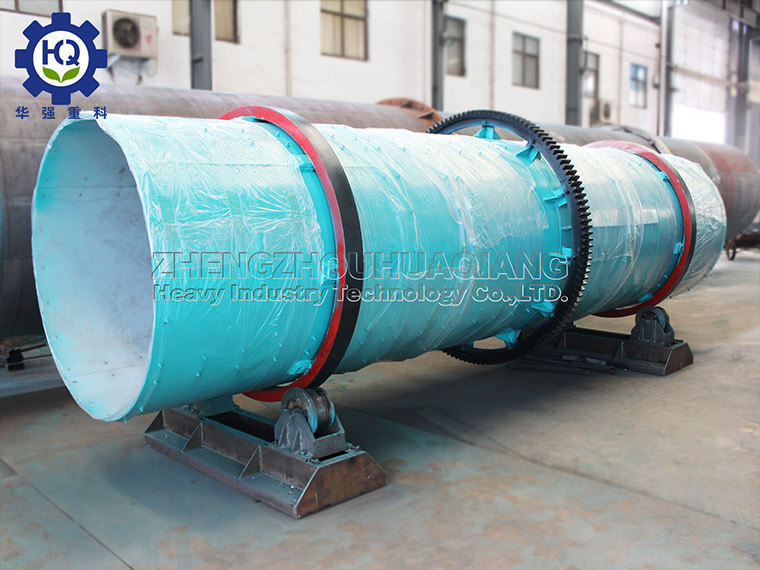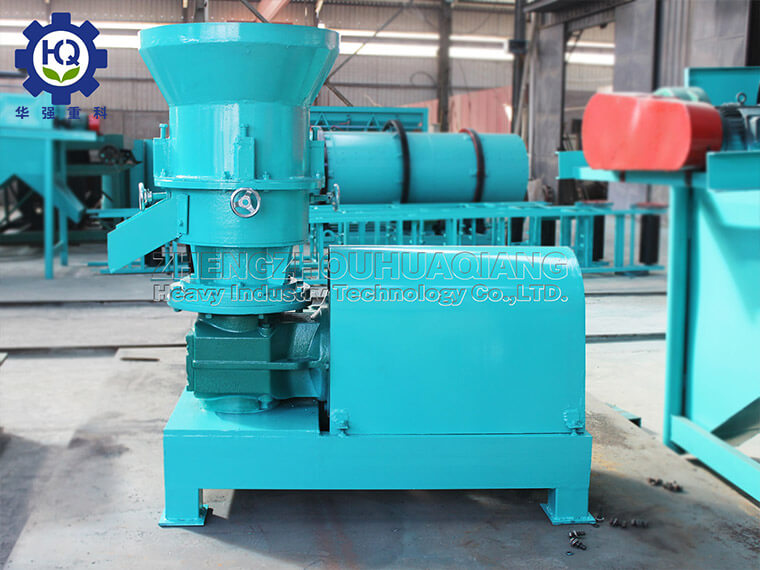As the mainstream product of compound fertilizers, NPK fertilizer’s granulation process directly affects nutrient uniformity, particle strength, and application effectiveness. The modern NPK fertilizer production line achieves precise compound of nitrogen, phosphorus, and potassium elements through scientific proportioning and efficient granulation technology. The following is a typical NPK fertilizer granulation process and key technology analysis.
1、 Raw material pretreatment and batching system
Raw material crushing and screening
Raw materials such as phosphate and potassium salts need to be processed by a chain crusher to a particle size of 1-3mm to ensure sufficient subsequent reactions.
The vibrating screen is used to remove impurities, and the purity of raw materials is required to be ≥ 95%.
Accurate ingredients
Using electronic belt scales and weight loss feeders, the dynamic proportioning error is ≤ 0.5%.
A typical NPK formula (such as 15-15-15) requires precise control of the ratio of urea, monoammonium phosphate, and potassium chloride..jpg)
2、 Core granulation process
Steam granulation method (drum granulation)
technological process:
The mixed raw materials enter the rotary drum granulator and are sprayed with saturated steam (pressure 0.3-0.5MPa).
The material is bonded by liquid phase (molten urea) during rolling, forming 1-4.75mm particles.
Key parameters:
Material temperature: 80-100 ℃
Steam consumption: 50-80kg/ton fertilizer
Particle forming rate: ≥ 90%
High tower melt granulation (suitable for high nitrogen formulations)
Process characteristics:
Urea, ammonium nitrate, etc. are melted and sprayed from the top of the tower (nozzle aperture 1.5-3mm).
During the process of particle falling, it cools and solidifies, forming spherical particles (strength ≥ 20N).
Advantages:
Smooth particles that are not prone to clumping
More uniform release of nutrients
3、 Post processing procedure
Drying and Cooling
The drum dryer (hot air temperature 120-150 ℃) reduces the moisture content of particles from 3% to ≤ 1%.
The fluidized bed cooler quickly cools down to below 40 ℃ to avoid nutrient decomposition.
Screening and material return processing
Classification of three-level vibrating screen:
Qualified particles (2-4.75mm) enter the coating section.
Fine powder (<2mm) is returned to the granulator.
Large particles (>5mm) are crushed and reused.
Anti caking treatment
Spray diatomaceous earth or mineral oil onto the wrapping tube (dosage 0.5-1.5kg/ton).
The new polymer coating agent can extend the fertilizer effectiveness period to 3-6 months.
4、 Key points of quality control
Nutrient testing
Real time monitoring of N, P, and K content using an online near-infrared analyzer, with a deviation controlled within ± 0.3%.
Particle physical indicators
Strength ≥ 15N (measured by drum method)
Particle uniformity (over 90% of particles are concentrated in the 2-4mm range)
environmental requirements
The exhaust gas undergoes cyclone dust removal and wet scrubbing, with a dust emission of ≤ 30mg/m ³.
5、 Technological innovation direction
Energy Saving
Adopting a steam condensate water recovery system can reduce energy consumption by 15-20%.
intelligent control
The AI based granulation parameter optimization system can automatically adjust the steam volume and drum speed.
The NPK fertilizer granulation process integrates chemical principles and mechanical technology, among which the steam granulation method dominates due to its low cost and wide adaptability, while the high tower granulation is known for its product quality. By precisely controlling the ingredients, granulation temperature, and post-treatment process, compound fertilizer products with uniform nutrients and excellent physical properties can be produced. In the future, with the development of intelligent and green manufacturing technology, NPK fertilizer granulation will evolve towards a more efficient and environmentally friendly direction.







